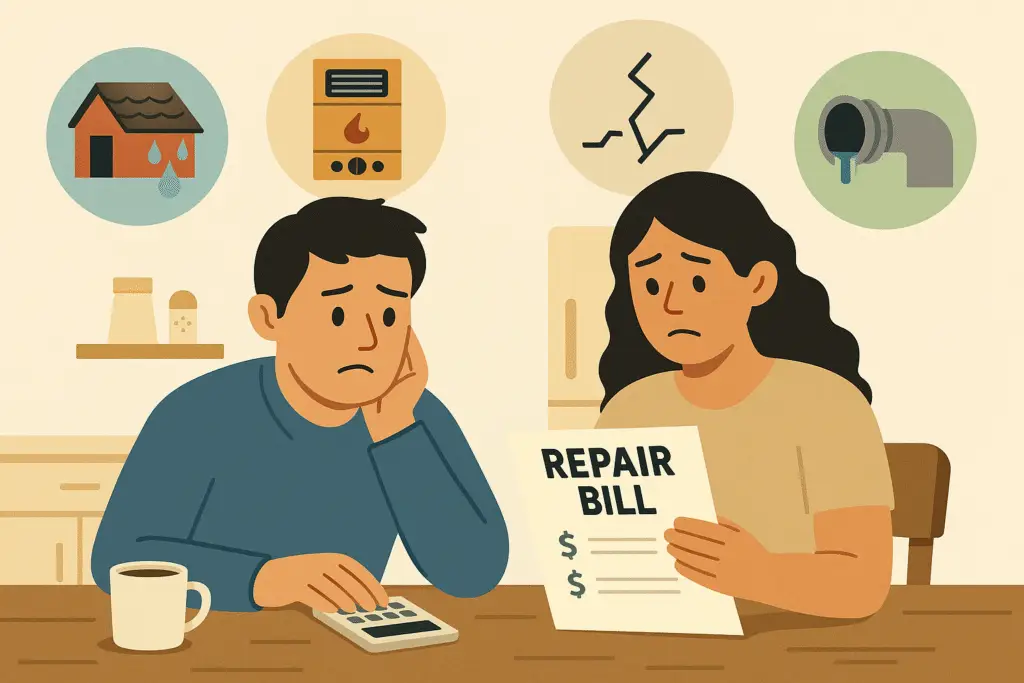Buying a home is exciting — but few owners are truly ready for the financial shocks that come with it. A roof that fails, a furnace that quits, a sewer line that collapses — repairs like these can run into the tens of thousands of dollars, often with little warning.
So how much should you really budget for home maintenance and emergency repairs?
To answer that, we analyzed hundreds of stories from homeowners in this Reddit thread, where people shared their single most costly repair. The answers were eye-opening — and they reveal why the old “1% of home value per year” rule often falls short.
Editor’s Note: This article starts with a summary of key findings, but if you want to dive into all the details, scroll to the bottom for our full Master Report on homeowners’ costliest repairs from Reddit’s r/homeowners community.
Worried about repair costs adding up?
Use our free Home Repair Reserve Calculator to see how much you should be setting aside for your home each year.
The Most Common Big-Ticket Home Repairs
Across hundreds of responses, four categories came up again and again:
1. Roof Replacement Costs
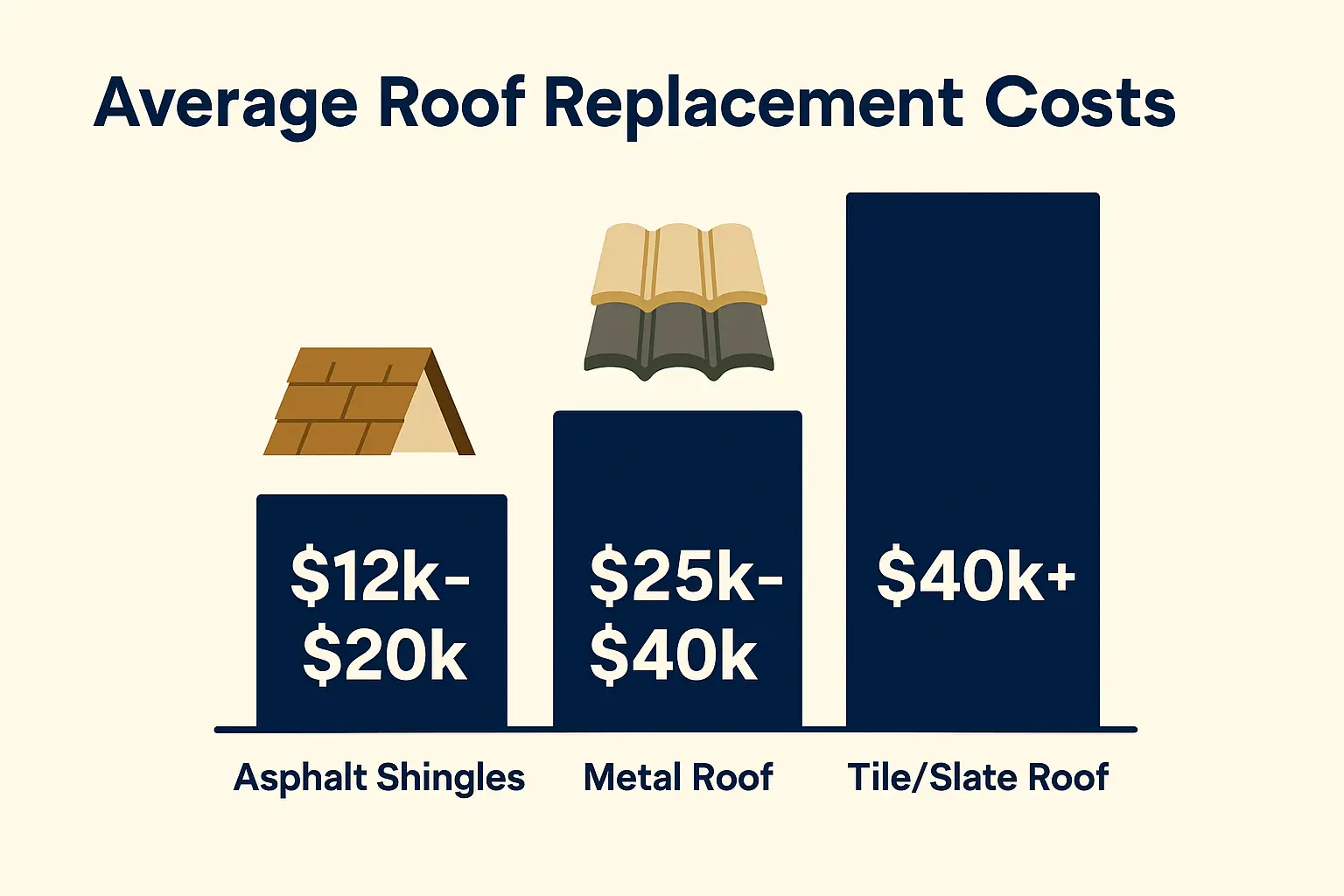
Roofs were by far the most common major repair. Homeowners reported costs ranging from $10,000 to $50,000+, depending on size, slope, and material. Historic and complex roofs can climb into six figures.
“Just had a new roof put on. Shocked me at $16k, for an under-average size house.” — Reddit user
2. HVAC System Replacement
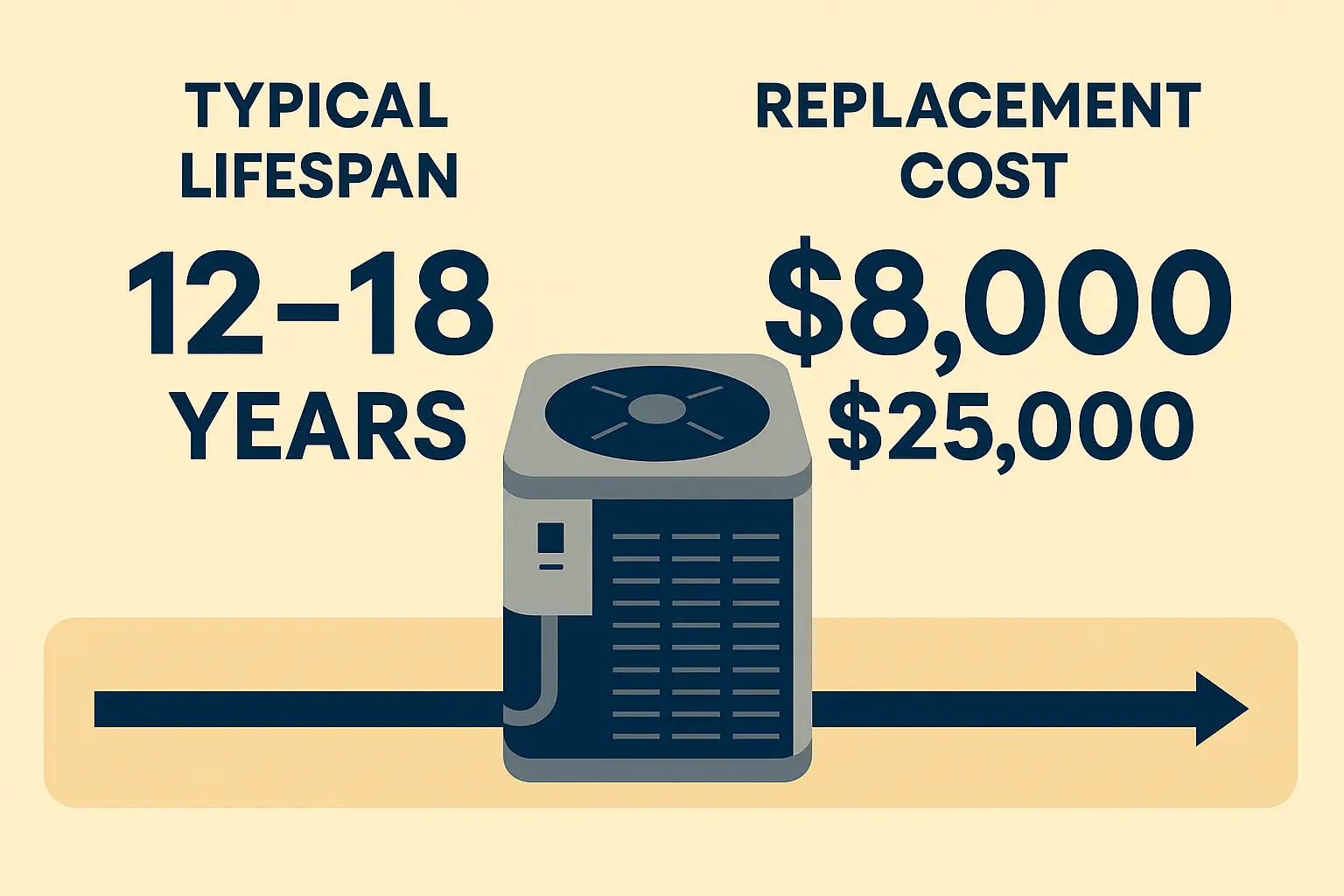
Heating and cooling systems typically last 12–18 years. When they fail, the bill is steep. Many homeowners reported $8,000 to $25,000 for new furnaces, air conditioners, or heat pumps.
“HVAC was $18k for both furnace and duct work.” — Reddit user
3. Plumbing & Sewer Failures
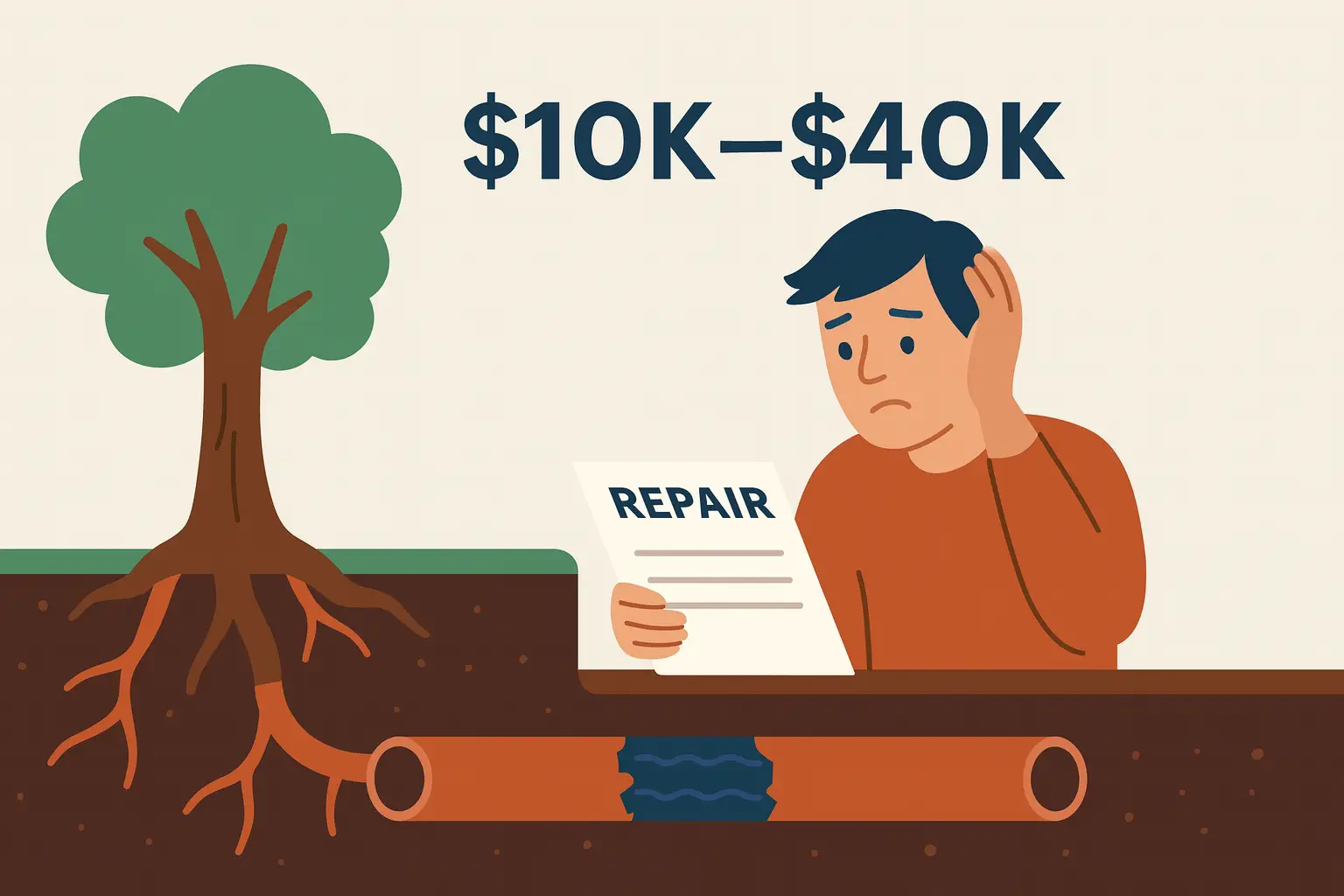
Few things are more disruptive — or expensive — than a collapsed sewer line or failing plumbing system. Repairs ran from $7,000 to $40,000+ in many cases.
“$40k because our main sewer line collapsed under our house.” — Reddit user
4. Foundation & Structural Repairs
Less common but financially devastating, foundation work often cost $30,000 to $100,000+.
“Foundation repairs and sump installs: $100k+ conservatively.” — Reddit user
The Most Shocking Repair Stories
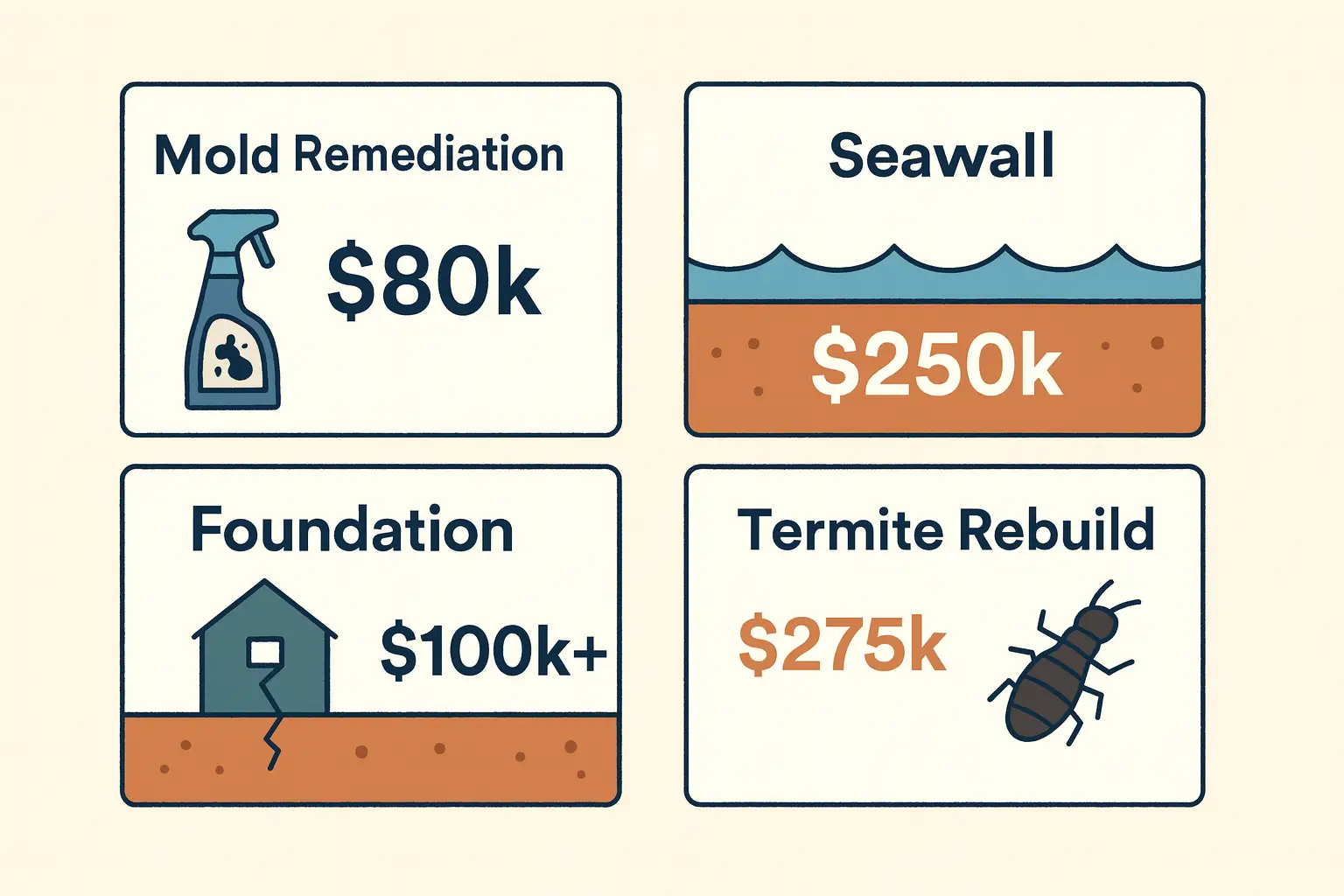
While most repair bills landed in the five-figure range, some homeowners reported jaw-dropping costs:
- $80,000 mold remediation after a hidden leak
- $250,000 seawall to protect a home from erosion
- $275,000 termite rebuild of structural framing
- $200,000+ hurricane damage and mold cleanup
- $100,000+ foundation repairs
These outliers are rare, but they highlight the importance of having both insurance protection and a sizable emergency fund.
How Much Should You Really Save?
The old advice — saving 1% of your home’s value per year — is still a good starting point. But the Reddit data shows why you also need a cash cushion for major surprises.
- Annual Maintenance Budget: 1% of your home’s value each year.
Example: A $400,000 home = $4,000 annually. - Emergency Repair Fund: At least $10,000–$25,000 in liquid savings to cover a roof, HVAC, or sewer emergency.
- Stress-Test Buffer: For older or high-risk homes, aim higher — enough to handle a $40,000–$60,000 shockwithout derailing your finances.
“Even a small problem starts at $1k these days, and any mid-size problem is $10k minimum.” — Reddit user
See Your Number With the AHA Repair Reserve Calculator
Use our free Home Repair Reserve Calculator to see how much you should be setting aside for your home each year.
How to Minimize Your Out-of-Pocket Risk
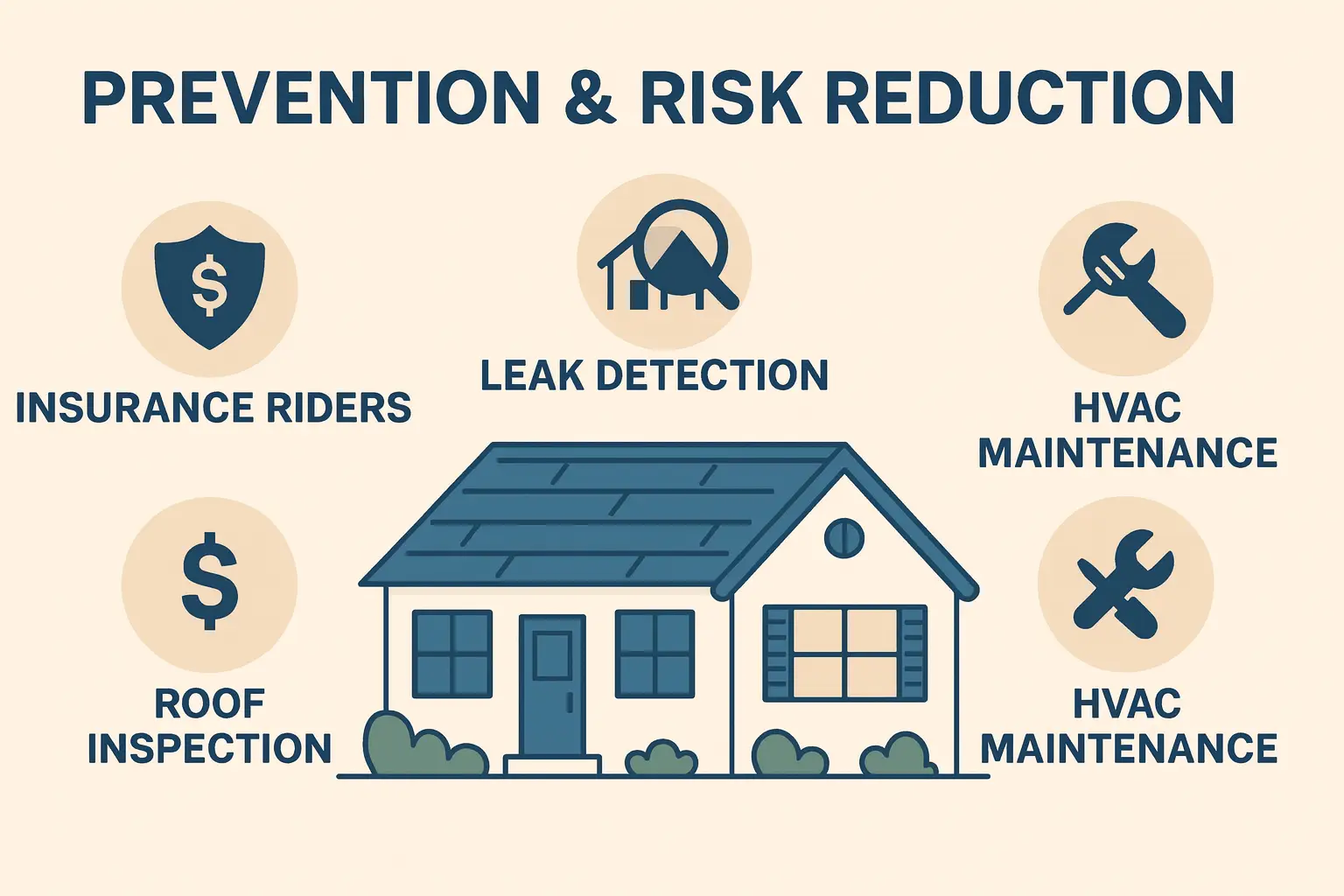
You can’t prevent every repair, but you can reduce your exposure:
- Insurance riders: Ask about sewer line coverage, equipment breakdown riders, ordinance & law coverage, and flood insurance if you’re in a risk zone.
- Smart leak detection: Install a whole-home water shutoff valve and moisture sensors near high-risk appliances. A $50 sensor can prevent a $15,000 mold claim.
- Proactive maintenance:
- Inspect your roof and gutters annually
- Service HVAC systems each season
- Camera-scope sewer lines every few years
- Trim trees before storms
- Test sump pumps and keep backups charged
FAQ: Home Repair Savings
How much should I save for home repairs each year?
A common rule of thumb is 1% of your home’s value per year. For a $400,000 home, that’s about $4,000 annually.
What’s the most expensive home repair?
According to homeowner reports, roofs and HVAC systems are the most common big-ticket items. But foundations, floods, and mold can exceed $100,000 in rare cases.
Is the 1% rule still accurate in 2025?
It’s a starting point, but many homeowners in the Reddit thread faced costs that far exceeded that budget. For older homes or harsh climates, a more realistic target is 2% per year plus an emergency cushion.
Bottom Line
Every homeowner will face major repairs. The question is whether you’ll be ready when the bill comes due.
By learning from real homeowners — and combining their experiences with industry benchmarks — you can build a repair reserve that keeps surprises from turning into financial disasters.
👉 Next step: Use the AHA Repair Reserve Calculator to see exactly how much you should be saving each year.
Master Report: Homeowners’ Costliest Repairs (Reddit Case Study)
Thread: r/homeowners — “What’s been the single, most costly repair you’ve had as a homeowner?”
Engagement: 800+ comments, several hundred detailed cost reports
Coverage: Wide range of U.S. homeowners, ages of homes, and regions
1. Ranked by Frequency of Mention
| Repair Category | Frequency (mentions) | Typical Range |
|---|---|---|
| Roof replacement | ~120+ | $10k–$30k |
| HVAC / Furnace / Heat Pump | ~100+ | $10k–$20k |
| Foundation / Structural | ~50 | $20k–$50k |
| Plumbing / Sewer / Septic | ~50 | $7k–$20k |
| Windows / Siding / Exterior envelope | ~40 | $20k–$40k |
| Water Damage / Mold Remediation | ~30 | $15k–$40k |
| Tree Work / Landscaping / Retaining Walls | ~25 | $5k–$25k |
| Electrical (Panels, Rewire, Service) | ~20 | $8k–$20k |
| Chimney / Fireplace | ~15 | $8k–$20k |
| Decks / Porches | ~15 | $20k–$40k |
| Driveway / Hardscape | ~10 | $6k–$20k |
2. Biggest Single-Dollar Hits Reported
- $700k — gut renovation due to systemic failures (hidden).
- $500k — teardown & rebuild from hidden foundation defect.
- $490k — window replacement (luxury home).
- $275k — termite-eaten wall & rebuild.
- $250k — seawall for Lake Michigan erosion.
- $230k — Florida hurricane flood rebuild (insurance fight).
- $200k — frozen pipes flood gut job.
- $152k — roof replacement (historic large home).
- $100k–$150k — foundation/stabilization projects.
- $80k–$100k — black mold remediation.
3. Patterns & Pain Points
- Water = #1 cost driver. Slow leaks, flashing errors, burst pipes, flooding → $50k–$200k+.
- Cluster effect. Many homeowners reported roof + HVAC + plumbing + windows all failing within ~2 years.
- Insurance pitfalls.
- High deductibles ($10k each peril).
- Coverage exclusions (flood, sewer lines, mold).
- Denials (“pre-existing neglect”).
- Some dropped after claims.
- Contractor risk. Botched jobs, disappearing contractors, scams (esp. HVAC/window sales).
- Regional multipliers.
- Hurricanes (Florida, Gulf) → 6-figure repairs.
- Wildfire zones (West) → annual tree costs $20k+.
- Midwest clay soil → foundation movement.
- Coastal erosion → seawall $250k+.
- Old homes vs. new:
- Old homes = asbestos, knob & tube wiring, cast iron pipes, rot.
- New homes still = roof/HVAC after 10–20 years, insurance non-renewals.
4. Homeowner Lessons (Consensus)
- Budget for the Big Four: Roof, HVAC, Foundation, Plumbing.
- Leaks kill homes. Any moisture delay = exponential cost.
- Always camera-scope sewer lines before buying.
- Hire a structural engineer before foundation jobs.
- Insurance ≠ safety net. Riders for flood/sewer/mold are essential.
- Deductibles matter. Many ate $10k+ “covered” claims.
- Vet contractors. Established firms > fly-by-night subs.
- Expect clusters. Major systems fail around the same time.
- DIY where possible. Even partial demo/prep saves thousands.
- Have a real reserve. Rules of thumb:
- Roof replacement fund (~$20k).
- $2.25 per sq ft per year for reserves.
- 2% of home value annually for maintenance.

